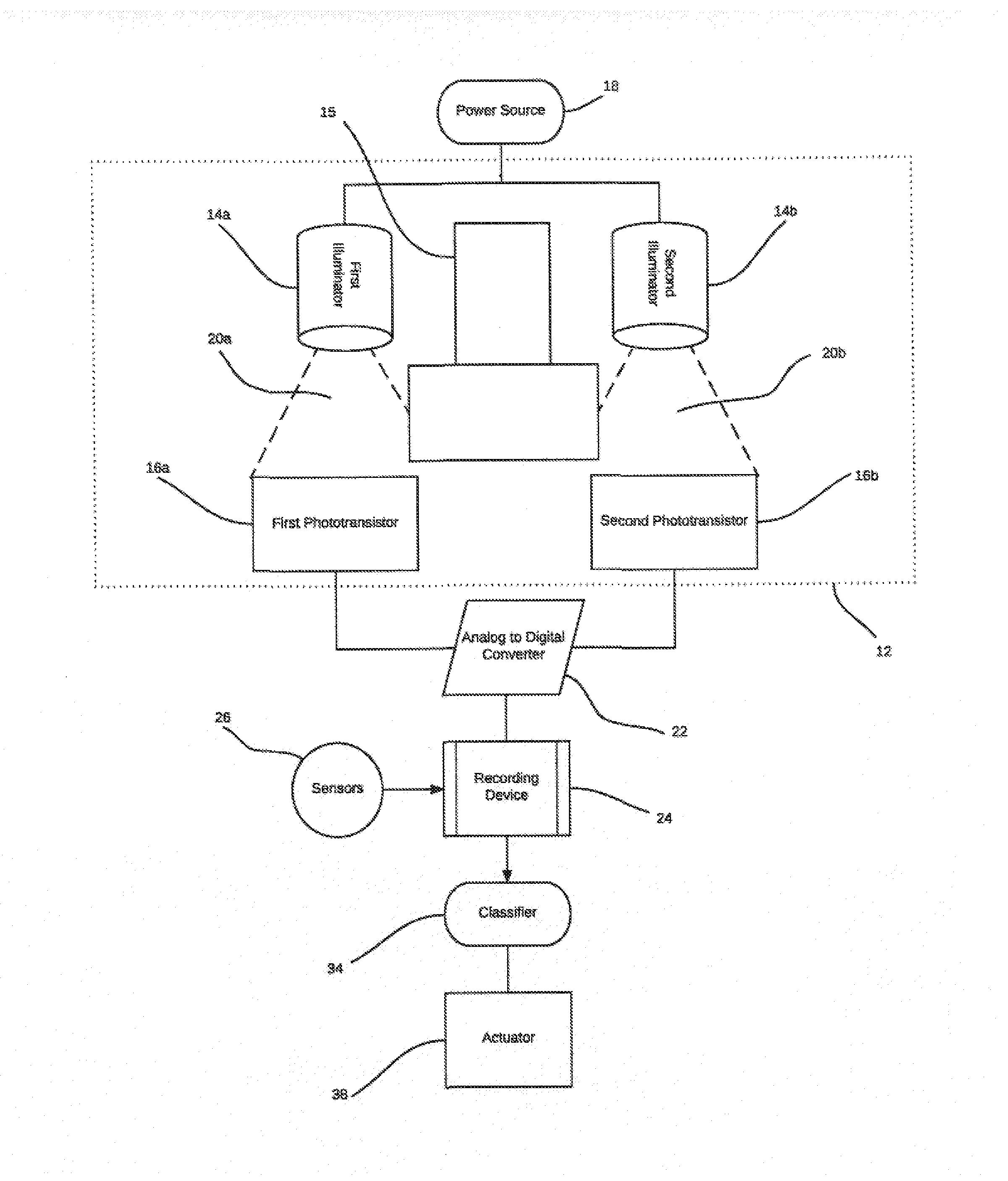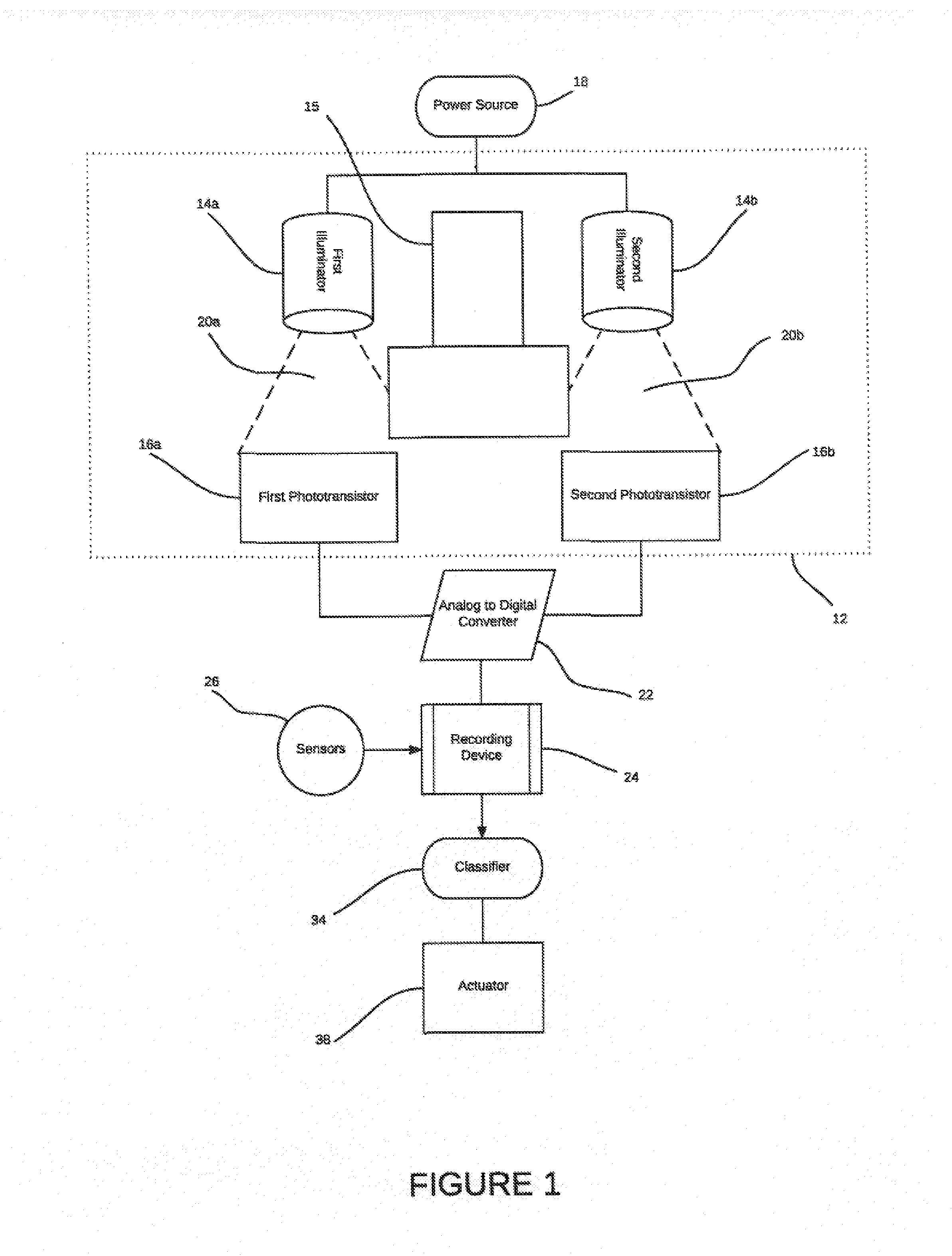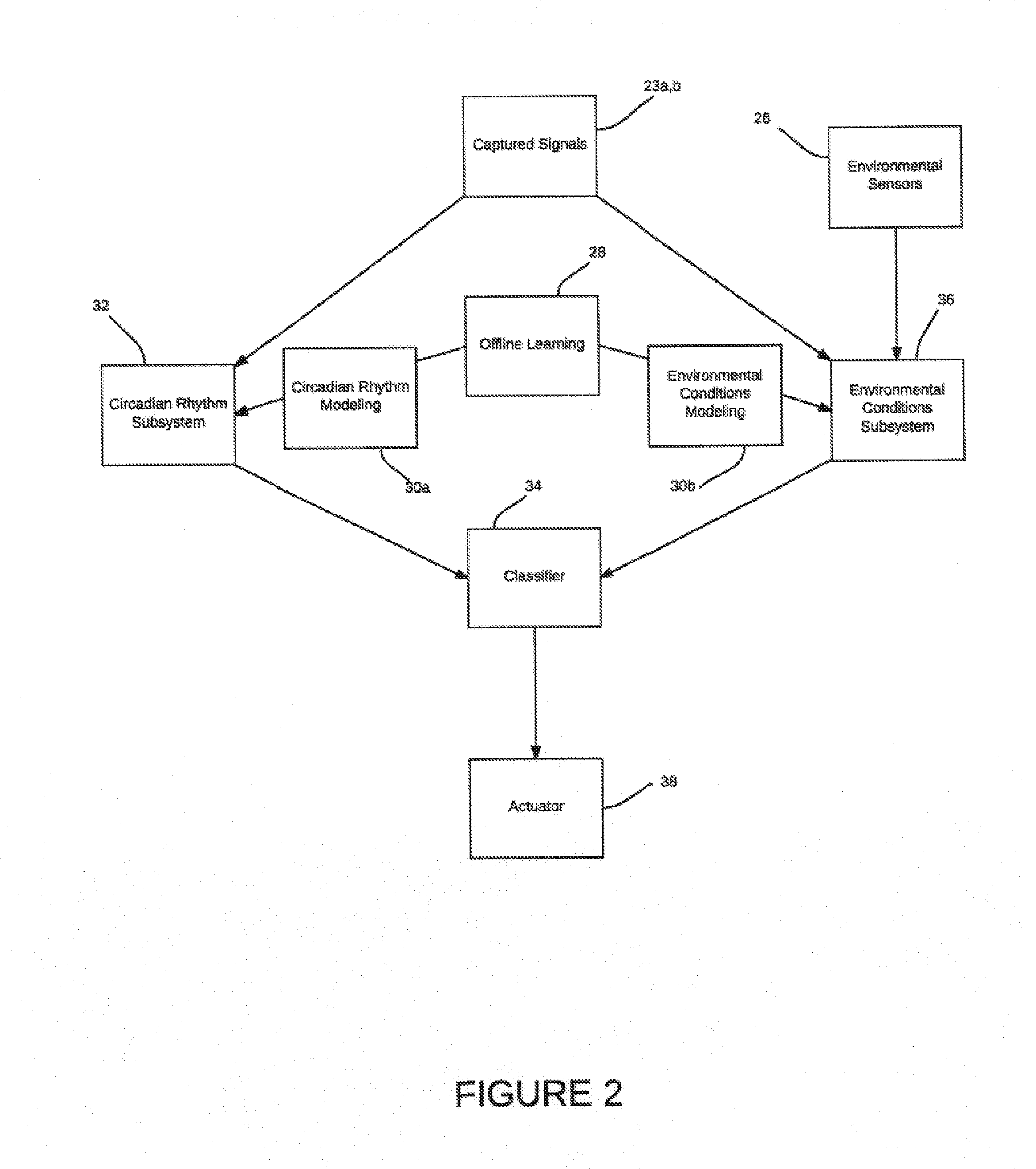Systems and methods for classifying flying insects
a technology of flying insects and classification methods, applied in the field of flying insect classification systems, can solve the problems of lack of prior progress, lack of real progress, extreme sensitivity to wind noise and ambient noise in the environment,
- Summary
- Abstract
- Description
- Claims
- Application Information
AI Technical Summary
Benefits of technology
Problems solved by technology
Method used
Image
Examples
Embodiment Construction
[0031]The detailed description set forth below is intended as a description of the presently preferred embodiment of the invention, and is not intended to represent the only form in which the present invention may be constructed or utilized. The description sets forth the functions and sequences of steps for constructing and operating the invention it is to be understood, however, that the same or equivalent functions and sequences may be accomplished by different embodiments and that they are also intended to be encompassed within the scope of the invention.
[0032]One aspect of the present disclosure is a system that can non-evasively capture signals from flying insects, and use this information to classify the insects by species, physiological state, and / or sex (if the insect is sexually dimorphic). This system can be a standalone device, or can be integrated into the entrance of, or within, a standard insect trap. Examples of physiological state include both natural physiological ...
PUM
 Login to View More
Login to View More Abstract
Description
Claims
Application Information
 Login to View More
Login to View More - R&D
- Intellectual Property
- Life Sciences
- Materials
- Tech Scout
- Unparalleled Data Quality
- Higher Quality Content
- 60% Fewer Hallucinations
Browse by: Latest US Patents, China's latest patents, Technical Efficacy Thesaurus, Application Domain, Technology Topic, Popular Technical Reports.
© 2025 PatSnap. All rights reserved.Legal|Privacy policy|Modern Slavery Act Transparency Statement|Sitemap|About US| Contact US: help@patsnap.com



